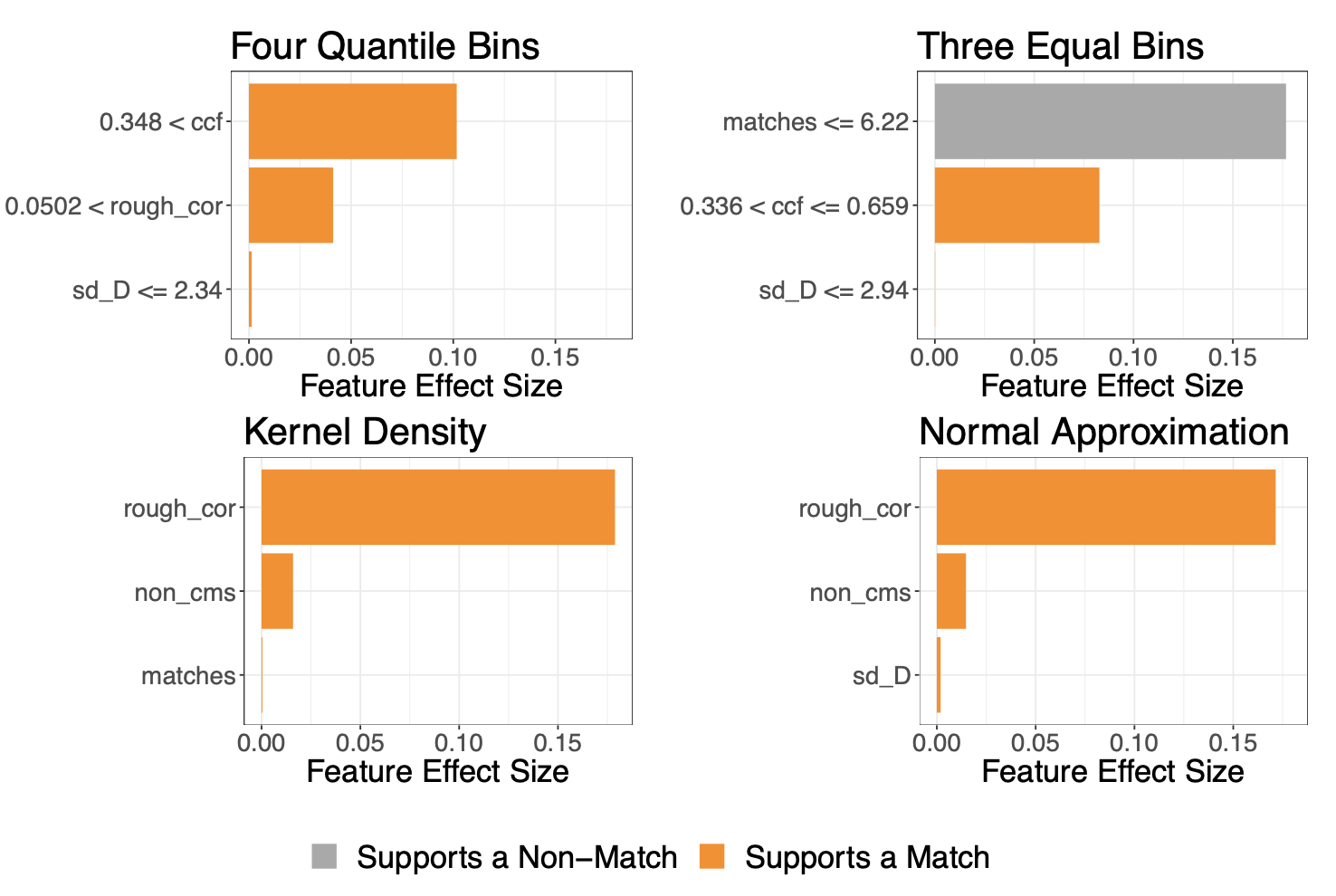Using LIME to Interpret a Random Forest Model with an Application to Bullet Matching Data
Poster for Midwest Statistical Machine Learning Colloquium
Also presented on April 10, 2019 at the Iowa State University Graduate and Professional Student Research Conference
Random forests are known for their accurate predictive abilities, but they are a part of the family of machine learning models that lack interpretability. Recently, a technique called LIME was developed to provide local interpretations for complex predictive models. LIME determines which variables are important in a prediction of interest by fitting a local linear regression to model predictions and perturbations of the data. The coefficients from the linear model are used to interpret the complex model. While applying LIME to random forests, I encountered some unusual results. This led me to develop some diagnostic tools to evaluate LIME. I will demonstrate these by assessing the application of LIME to a random forest fit to a forensics bullet matching dataset.
